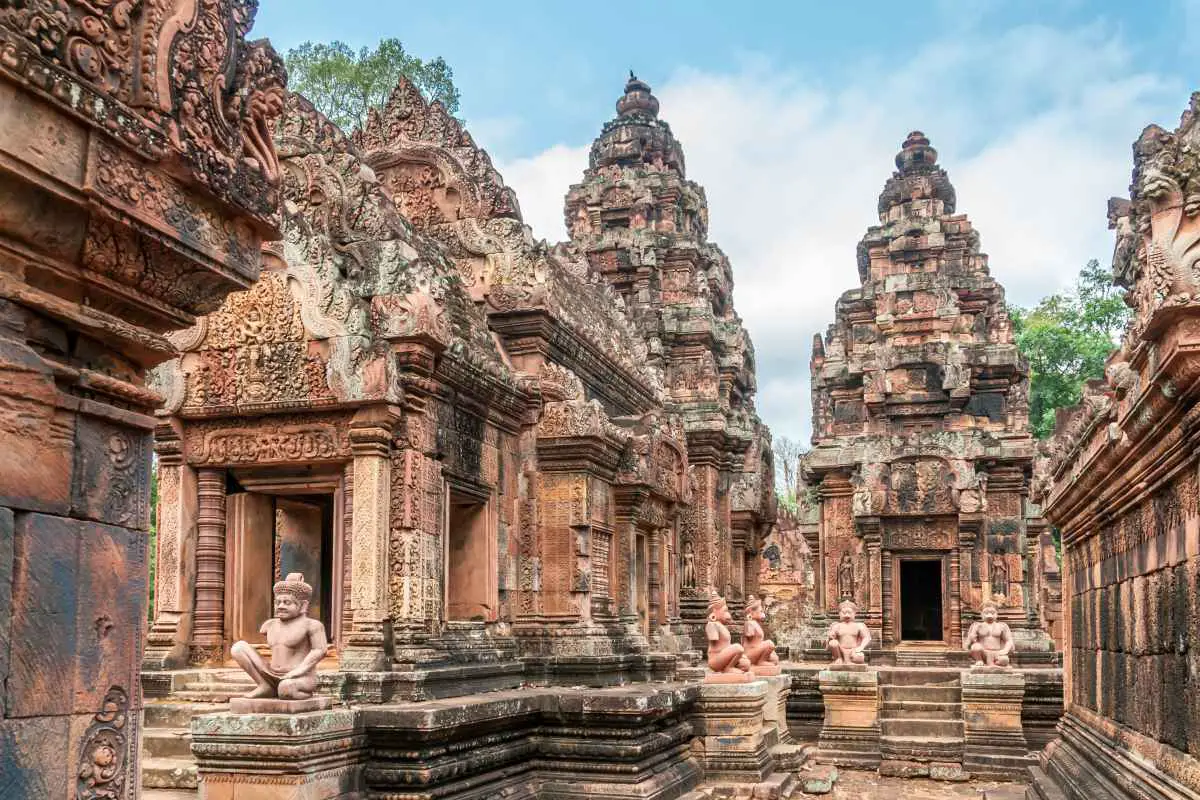Cambodia is known worldwide for being home to the centuries-old temples of Angkor Wat. Built between the 9th and 15th centuries by the Khmer Empire, it is the most sought-after tourist attraction in the country. However, Cambodia has a lot more to offer, and in this post, I will show you what to do in Cambodia.
I was in Cambodia for the first time in 2016, and I was completely in love with the country. Walking through Cambodian attractions, talking to people, and marveling at Khmer architecture was one of the highlights of my trip to Asia. And After so many comings and goings, I decided to write this post about what to do in Cambodia to help you get to know a little more about this amazing country.
Therefore, I’m going to highlight the 12 Best Things to Do in Cambodia that you can’t miss. Read on!
Things to Do in Cambodia
1. Angkor Wat
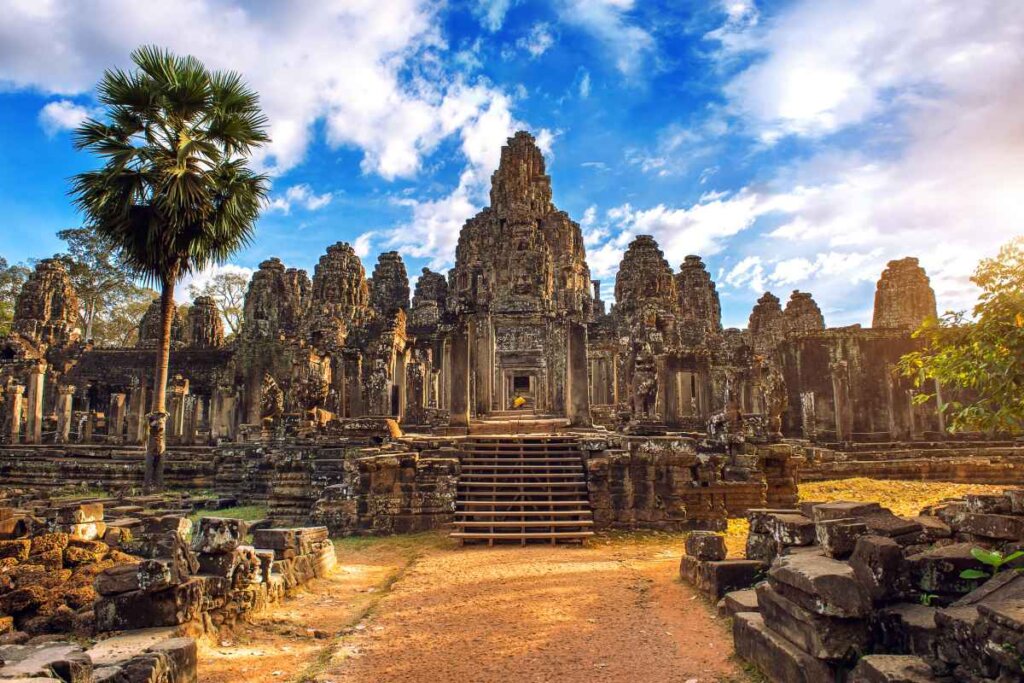
I spent a full day exploring this impressive archaeological site, so I have plenty to say. Actually big is not enough to describe it, I think I would say colossal! With five towers that reach 65 meters in height, it is the main temple of Angkor and the largest religious monument in the world.
Today it is considered among the most popular Cambodia tourist attraction and the great heritage of the country. The image of the temple is on the national flag and on the coat of arms of Cambodia.
The word “Angkor Wat” means in the Khmer language “Temple of the city,” and it has become the symbol of Cambodia and “the must see attraction” par excellence. Angkor Wat is located within the archaeological complex of Angkor and has been declared a World Heritage Site by UNESCO.
Why do I think Angkor Wat is special? First is the temple galleries, which contain the images of Shiva and other Hindu gods. Second is the peculiar placement of these temples on a Westside position in contrast to other Cambodian temples that are on an eastside position. The third is the massive amount of sandstone that the builders used for Angkor Wat. It took five million sandstone to finish it.
The carvings on the walls of the temple are of great interest to both visitors and researchers. The walls are carved with images that reach a length of many kilometers and narrate both episodes of Indian mythology and real historical events.
2. Royal Palace

Even though people say that Angkor Wat is one of the top tourist attractions in Cambodia, I think the Royal Palace is certainly the most visited in the capital, Phnom Penh. The structure was built to accommodate the royal family. Therefore it is fenced and not completely open to visitors, but this certainly does not diminish its charm.
During my visit, I had the opportunity to admire and appreciate the various pavilions. And although I did see everything, I saw the Throne Room, the Banquet Hall, the Reception Hall, and the Villa for Foreign Guests.
The palace is surrounded by unusual gardens. In addition to the usual lush green lawns, there are glades here where different trees, bushes, and flowers planted in tubs can be moved to any place in different combinations to create a new landscape.
3. National Museum of Cambodia
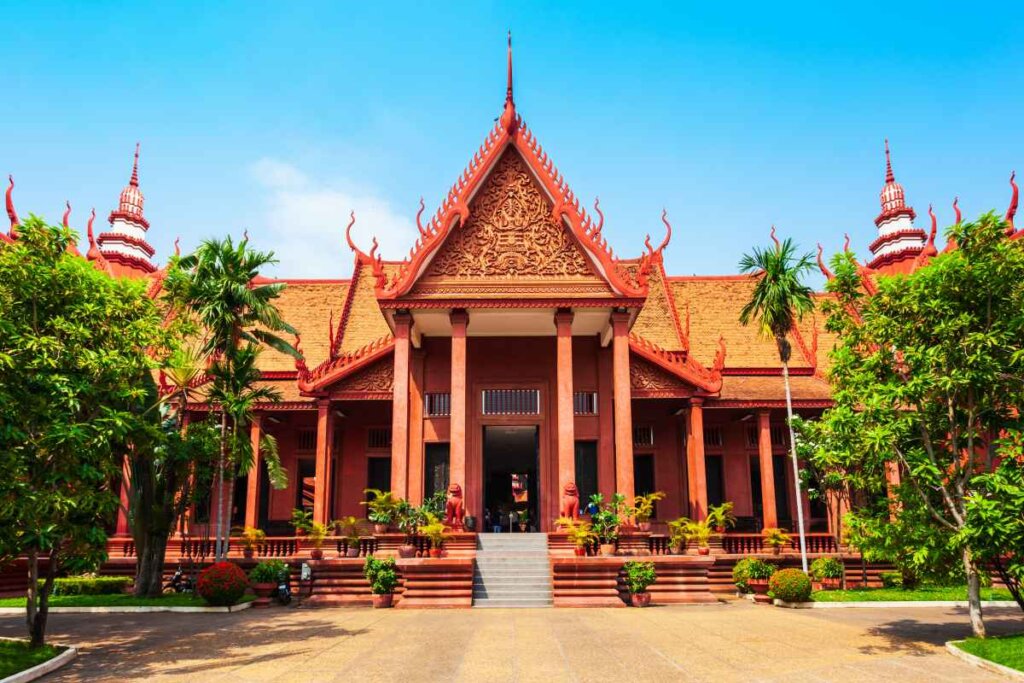
After spending about 2 hours at the Royal Palace, I took a taxi and headed to the National Museum, which is about 10 minutes away. The museum presents a complete collection of cultural, historical, and archaeological artifacts representing the most significant periods of Cambodia’s existence, from pre-Angkor times to the 15th century AD. The museum is a striking terracotta building in the classic Cambodian style, built at the beginning of the last century.
My tour guide explained that the construction of the National Museum began in 1917, and in 1920 its doors were opened to visitors. And four years after the opening, in 1924, in order to expand the museum, two wings were added to it on the side of the eastern facade.
Inside the museum, I saw a large number of sculptures. These are ancient statues of deities, demons, and heroes of folk legends. But the central place in this extensive collection is assigned to the Angkorian statues. These are bronze statues of Vishnu, Shiva, Rama, Ganesha, and the sculpture of Jayavarman. In total, there are about 5000 statues in the museum, according to which the development of the Khmer culture is well traced.
As for the surrounding areas, the museum has a picturesque courtyard with a variety of vegetation and beautiful man-made reservoirs that are pleasing to the eye.
4. Central Market
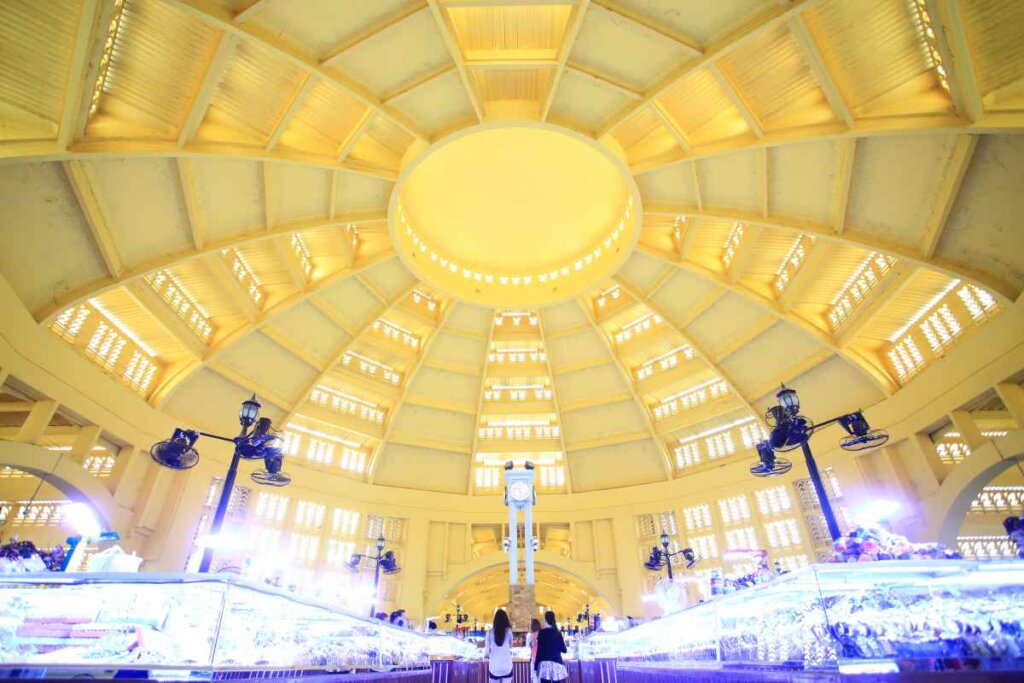
After so much exhaustion, I needed something to distract, relax and not demand much more from my head. I left the historic places for the next day and decided to go for a walk in the markets. It was still mid-afternoon, and I asked the tuk-tuk to drop me off at the Central Market.
The Central Market brings together a variety of trinkets, counterfeit products, and travel souvenirs, like any good traditional market. Get ready to bargain well if you want to buy something.
I left there empty-handed because I didn’t have room in the suitcase to carry anything extra. But I enjoyed the architecture of the place, in a 1930s Art Deco style.
Not far from Central Market, you can walk for a few blocks until you reach the Night Market, which starts at 5 pm. If you still have the mood, it’s worth getting there. There’s a lot of cheap stuff, including good food options (which you don’t have at the Central Market).
5. Banteay Srei
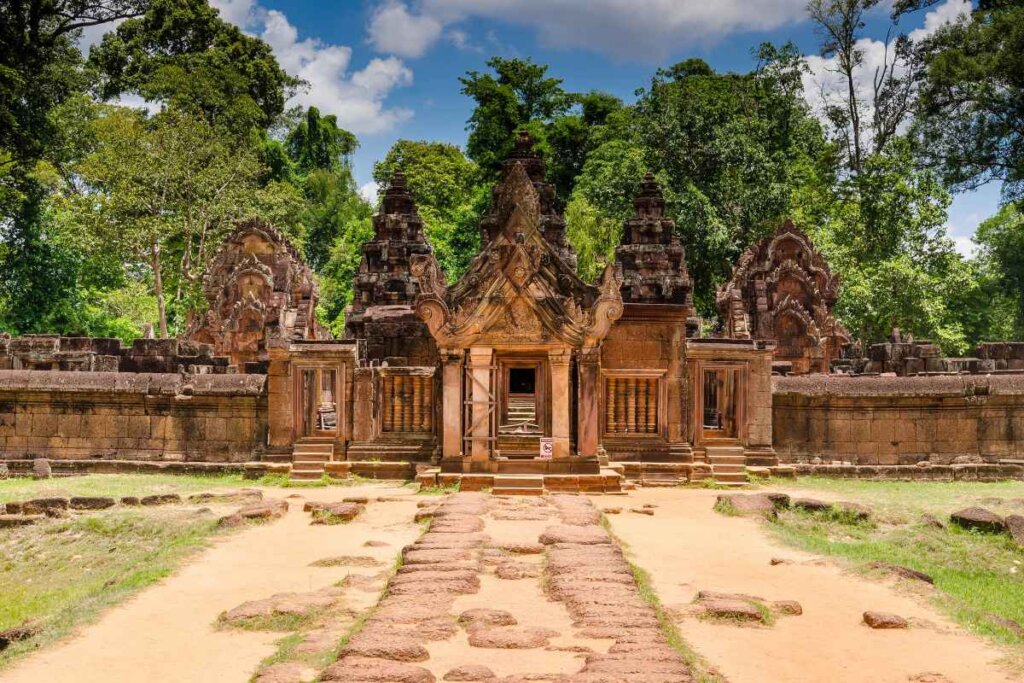
I started my second day by visiting Banteay Srei, another of the best places to visit in Cambodia. And as you have certainly understood, Cambodia is able to offer a multitude of temples and archaeological areas to visit. Therefore it is not easy to indicate the most interesting. But certainly, one of the most interesting Cambodia attractions was this.
It is a Hindu temple made famous all over the world, thanks to the pink sandstone, with which it was entirely built. In addition, I saw sculptures that cover the exterior and the interior of the buildings.
Banteay Srei is considered so beautiful, and it is believed that its construction was attributed to a group of women. It has been declared a World Heritage Site by UNESCO and is a well-equipped archaeological site, with a parking area, a shopping area, a refreshment place, and many small restaurants along the way to reach it.
6. Tonle Sap Lake
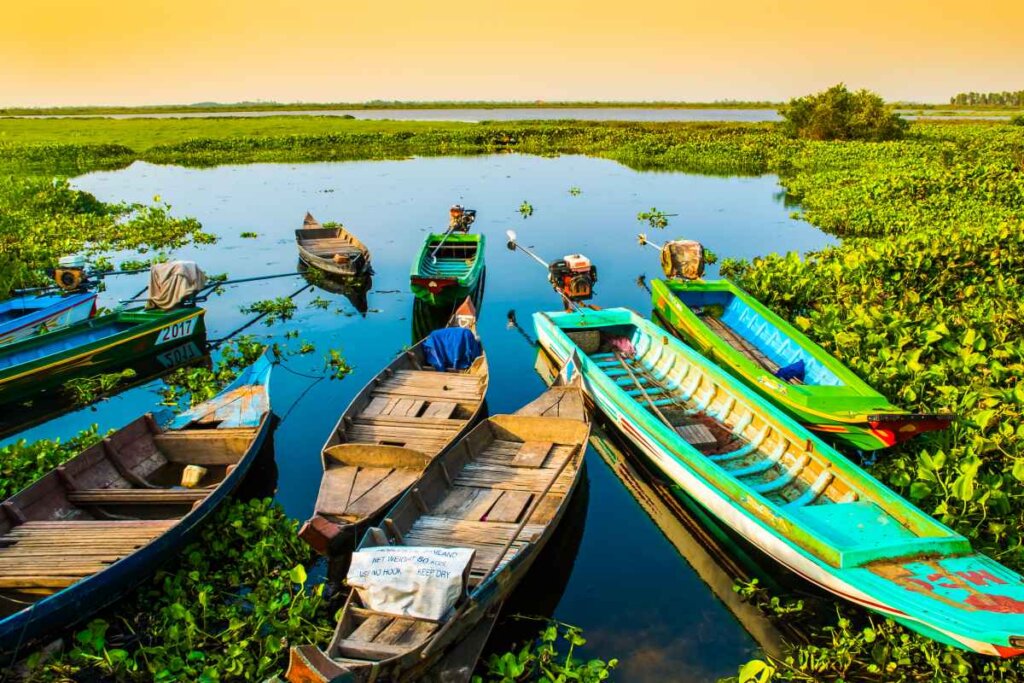
The Tonle Sap Lake in Khmer means freshwater lake and has been considered a Biosphere Reserve by UNESCO in 1977. This is a very valuable, and in its own way, one of the top tourist attractions in Cambodia. This curious lake grows up to almost ten times more in the rainy season, reaching its extension to pass from 2590 sq. km to sq. km24605 km!
So being in Cambodia, I did not want to miss the opportunity to see Tonle Sap Lake and some of these floating villages. I wanted to see this characteristic way of living, since the houses are suspended on poles of more than 5 meters.
As the lake truly represents the heart of Cambodian life, it is impressive to see how the people organize and live there. During the journey, I admired some of the most beautiful landscapes of my stay, and I enjoyed these short exchanges in the company of the locals who welcomed me into the heart of their life and intimacy.
7. Sihanoukville
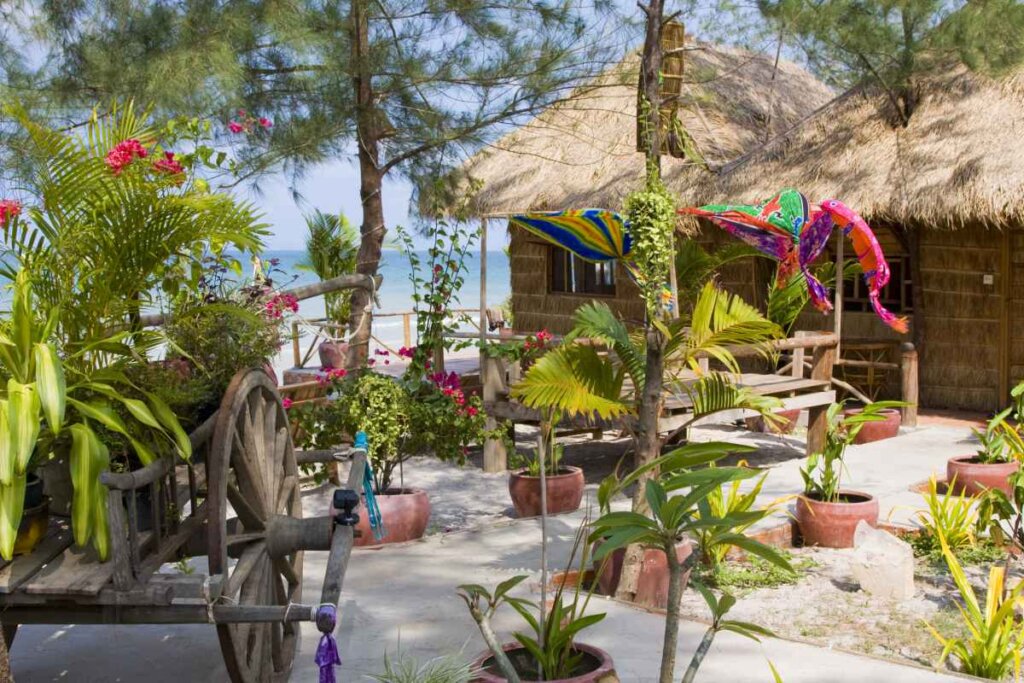
Located about 6-7 hours by bus from the Cambodian capital, I came across a small town on the coast with its marine tourism that is very dear to miss, namely the city of Sihanoukville.
To explore the top tourist attractions in Cambodia around Sihanoukville, there is no other choice but to rent a tuk-tuk. I have to insist that you need to bargain when renting a tuk-tuk and make sure of the destination. The atmosphere of the city itself is actually quite quiet. There is only one supermarket which is quite large.
Among the notable attractions of Sihanoukville, I singled out the following in a special way:
- Bamboo Island is one of the many beautiful islets of the coastal zone, which can only be reached by motorboat. So the journey to this island itself will already be interesting and impressive.
- The old pier is a protruding structure on the city coast. Here, I took my time to endlessly admire the sunsets and take unusually beautiful photos.
- Ream National Park. An area in pristine and very rich nature, including islets, mangroves, jungles.
- Monkey Island is also a picturesque area with dense jungle, beaches, and waterfalls. According to legend, the world’s largest monkey once lived here.
8. Sea Swimming and Sunbathing on Koh Rong Samloem
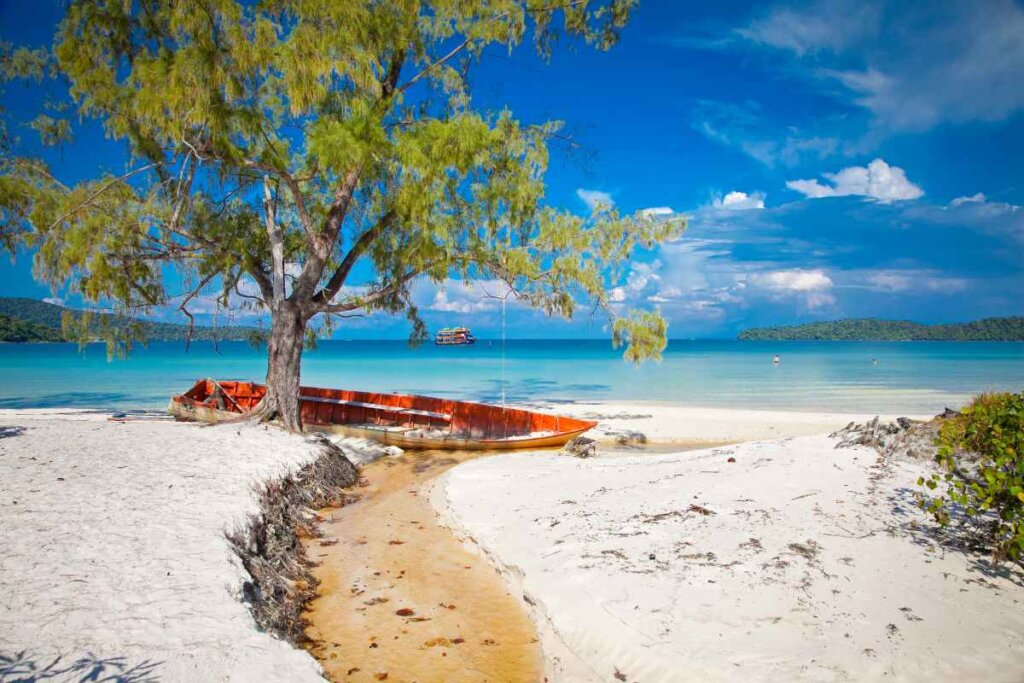
How is the sea in Cambodia? More than one person asked me. Is it worth it? Absolutely yes! The sea is the same as other popular destinations. Therefore, do not hesitate to include it in your travel itinerary to have a few days of sea and sun never hurts.
Among the various islands, I chose Koh Rong Samloem, about two hours from the coast of Sihanoukville. White sand, crystal clear water, and the jungle that covers the hinterland. I used a boat from Sihanoukville to reach this island. Various companies make the route between $20 and $ 25 (round trip).
A more popular part of the island is known as Mpay Bay. The accommodations are cheaper, and the atmosphere is half hippie.
It is also in Koh Rong Samloem that I was able to see plankton. For me, it was the first time, and I was amazed. Some agencies organize the night out for $10. By shaking the water, you will see the sparkle around you. Very beautiful
9. Bokor Hill Station
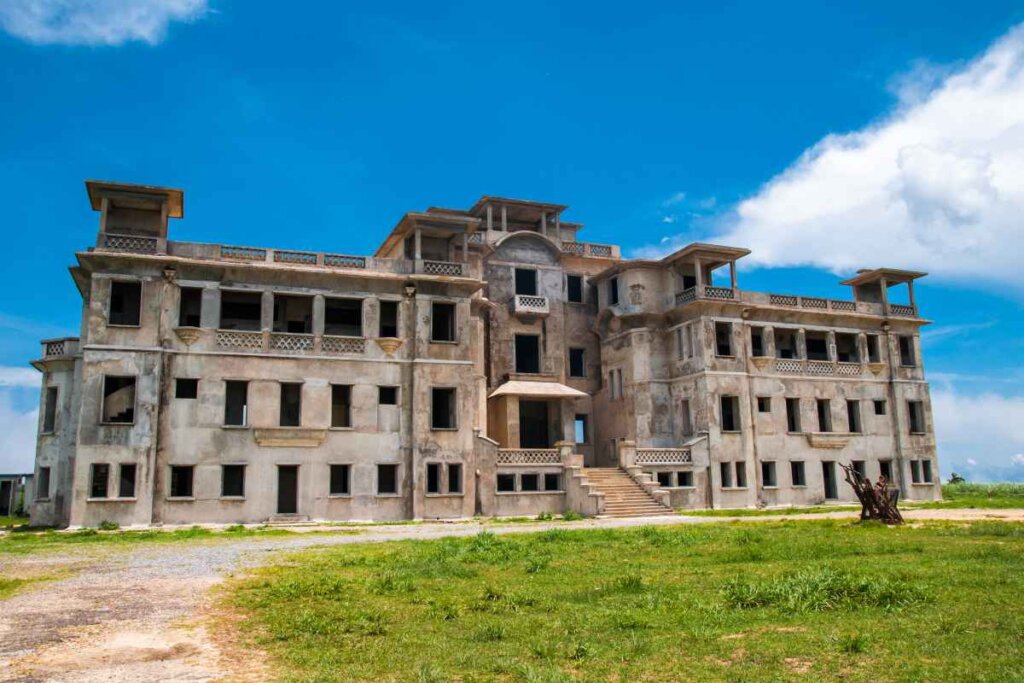
Another of the top tourist attractions in Cambodia is located on Mount Bokor: Bokor Hill station. This was once a resort town created by French colonists. Nowadays, the buildings of the town have long been abandoned.
The construction of the Bokor Hill resort was started in 1921. In general, when I tried to trace the history of the existence of Bokor Hill, it seemed that these places were cursed from the very beginning. After all, in the first years of construction in this remote area, about 900 people died. And during the First Vietnam War, the French left it.
Until 1972, the city was empty and was taken over by the Khmer Rouge. In these times, when the bloody regime of Pol Pot came into effect, many people were killed here, who were either shot or simply thrown into the abyss. The horrors that took place within the walls of the town during the Khmer Rouge rule were forever imprinted on its walls. Today, this mysterious ghost town is now visited only by tourists as part of excursions.
10. Phnom Aural Wildlife Sanctuary
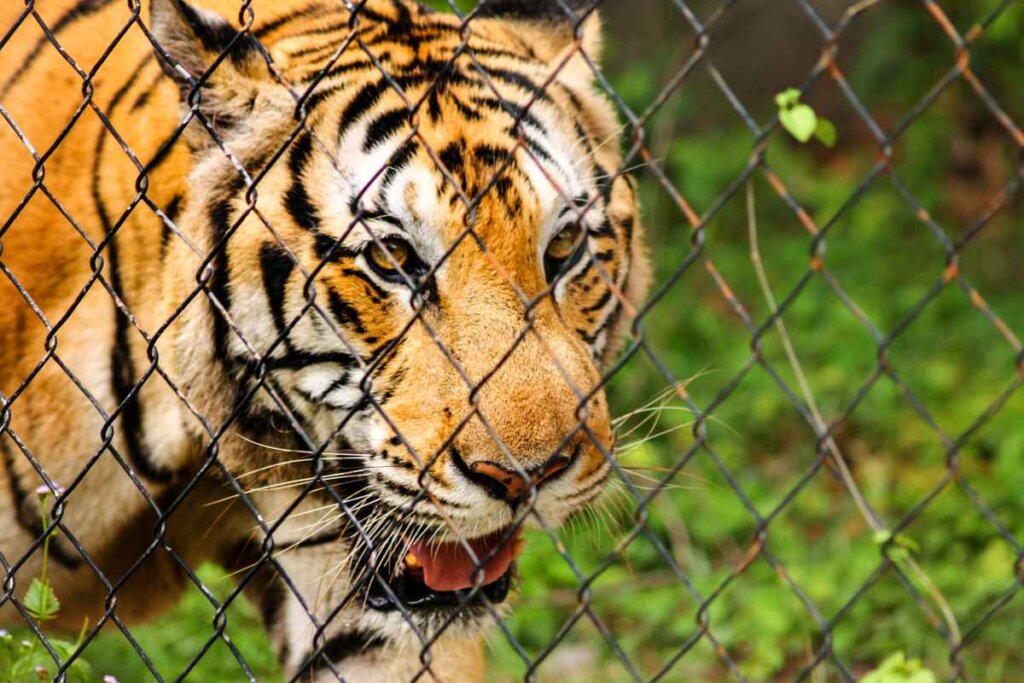
Phom Aural Wildlife Sanctuary was a great place for me to see some of Cambodia’s wildlife in their natural habitat. This sanctuary is well-known for being home to the country’s last surviving population of Siamese crocodiles and one of the best places to visit in Cambodia that you can’t miss.
In addition, I did a hiking adventure in this sanctuary since it contains at least 200 bird species. Some of the birds that I saw are Chestnut-headed Patridge, Great Hornbill, Blue Winged Leafbird, Cambodian Laughing Brush, Green Cocoa, Silver Breasted Hornbill, and Blue Pitta.
11. Angkor National Museum
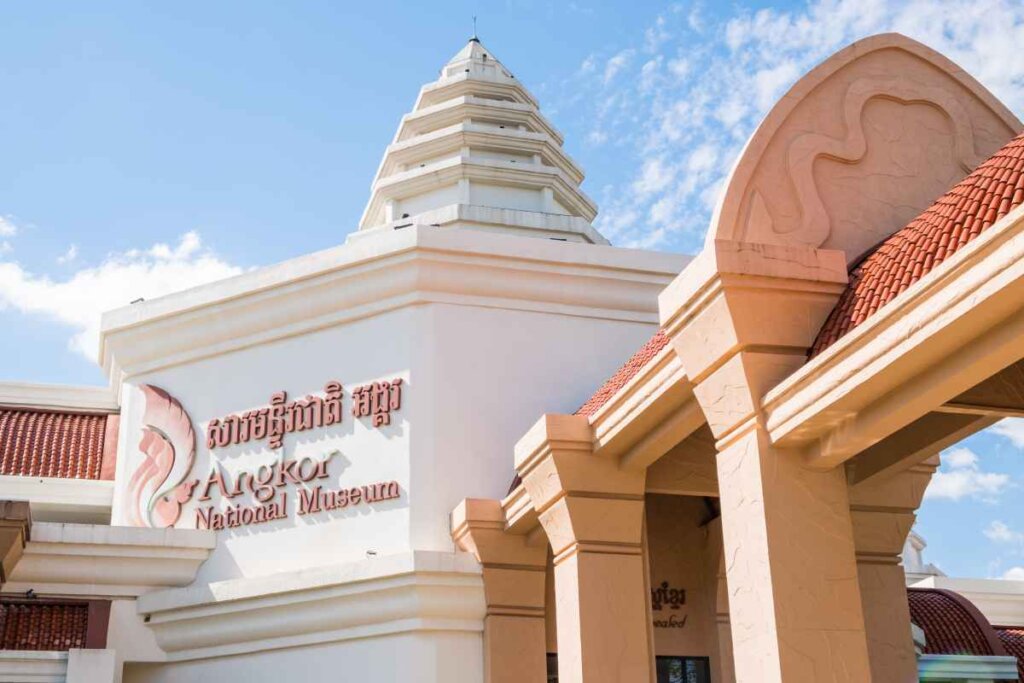
Angkor National Museum is among the top tourist attractions in Cambodia if you’re interested in Cambodian history. You’ll be able to learn about the Angkorian Empire that existed centuries ago and see artifacts from this era on display.
I noticed that this museum house exhibits detailing different aspects of life during the Khmer people’s rule over Cambodia, including architecture and sculpture, as well as arts like painting. Aside from displays, Angkor National Museum also undertakes restoration projects of damaged Cambodian artifacts. Therefore, what it has for tourists never stays the same.
12. Bayon Temple
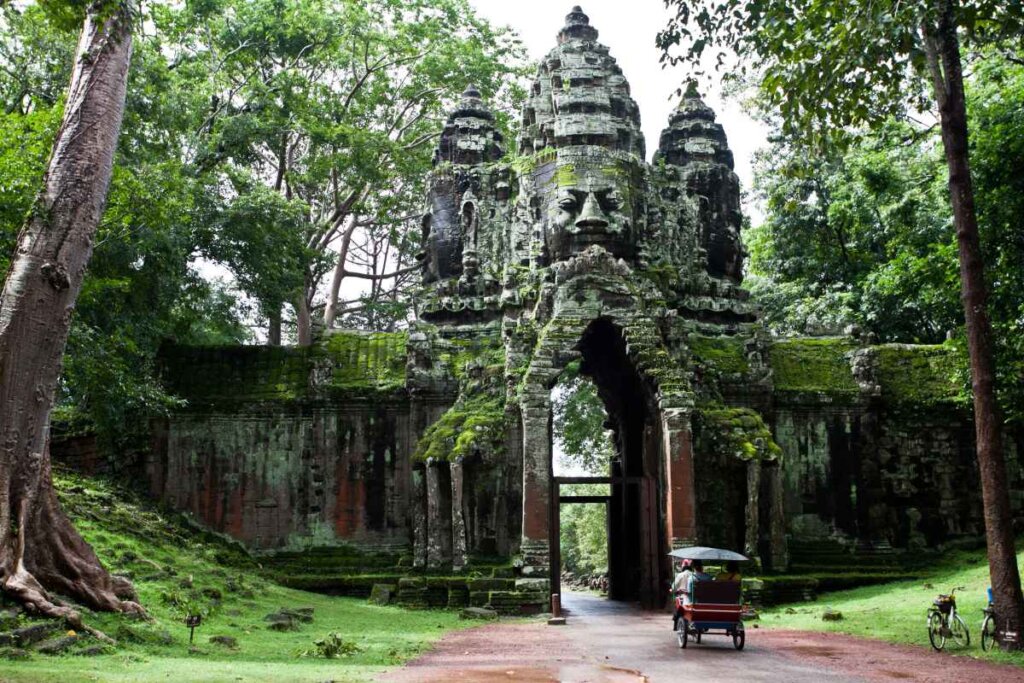
Finally, one of the best places to visit in Cambodia that I highly recommend is the Bayon temple. It is in this temple that you will find the famous stone faces, one of the main features of Khmer architecture.
The Bayon Temple is right in the center of Angkor Thom, which was the capital of the former Khmer empire. If you look at the map, you will see that Angkor Thom was built as a square, where its sides are perfectly aligned with north, south, east, and west. The Bayon temple in the center represents the intersection of heaven and earth.
Altogether there are 37 towers standing in this temple, but not all have faces on all four sides. Anyway, I found it extremely interesting to explore the temple and discover angles where I saw faces looking at each other.
Another part worth paying attention to is the temple’s outer walls, where I saw a part of Khmer history carved in detail. According to the guide, the recordings represent historical moments, such as battles won by the Khmer empire.
Altogether there are more than 11,000 figures in high relief, carved on more than 1km of walls. The details are really impressive!

